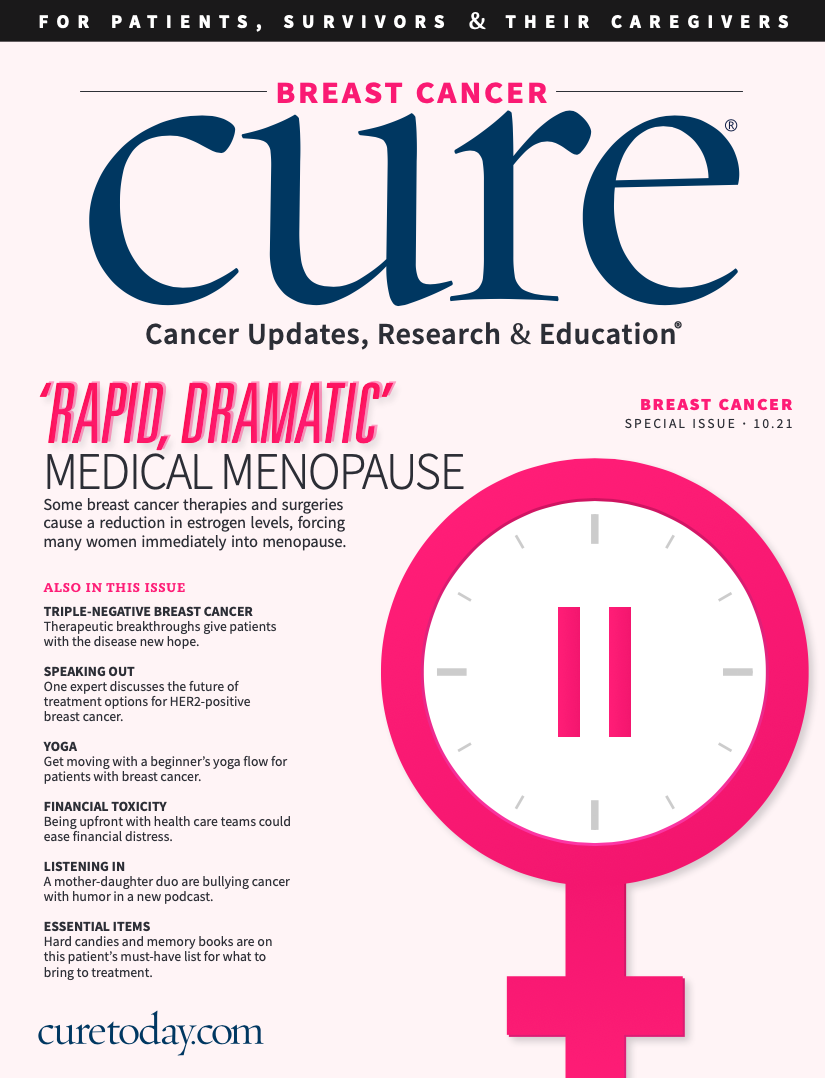Publication
Article
CURE
Facing Financial Toxicity in Cancer Care
Author(s):
Talking with a doctor about costly cancer treatments and being frank with health care teams can ease financial distress for patients with cancer.
Patients with cancer often face another challenge: financial toxicity. And while demographics like tumor stage and treatment can influence this, one expert says there are ways to mitigate or plan for the costly effects of cancer treatment.
“We need to better characterize (patients with cancer who) are at risk of financial toxicity and identify interventions to mitigate it,” said Dr. Rachel A. Greenup, an associate professor of surgical oncology and chief of breast surgical oncology at Yale School of Medicine in New Haven, Connecticut, in an interview with CURE®.
In this study, researchers assessed 571 patients with breast cancer who underwent lumpectomy or mastectomy. The findings demonstrated that elements such as work reduction or cessation, increased out-of-pocket spending and advanced tumor stage were all associated with increased financial distress. Patients with lower financial distress were more likely to have supplemental insurance, increasing annual household income and a credit score above 740.
Those facing financial toxicity often cope by borrowing money from friends or family, pulling money out of retirement or savings, fundraising and cutting down on daily spending. Greenup highlights that women from all socioeconomical backgrounds can be at risk for this toxicity.
“It is important to recognize that all women are at risk of cancer-related financial hardship, regardless of socioeconomic status or wealth — yet this can look different across varied patients,” Greenup, who was an author on the study, said. “More affluent women are less likely to go into bankruptcy, yet they may still employ cost-reducing strategies such as using savings, taking out second mortgages on homes or cutting out vacations. Certainly, this is a very different presentation of financial toxicity when compared to our most vulnerable patients who are at risk of food insecurity and losing housing. Ultimately cancer treatment costs can be unaffordable for everyone.”
The different treatment options for breast cancer may play a role in financial toxicity. Patients may not know what the financial implications of preference-sensitive decisions are, according to Greenup. She uses the example of deciding between
a lumpectomy or mastectomy. “If I could say to a patient, ‘You have a 2% lower risk of your breast cancer coming back if you undergo mastectomy compared to lumpectomy, but it may cost you $40,000 out of pocket if there are complications.’ This cost transparency and communication may impact patient choice,’” she explained. In short, she said, there seems to be a lack of cost consideration when discussing cancer treatment choices with patients and their families.
“Arguably the health care system is not as clear as we probably should be with patients about the real burden of cancer treatment,” she said.
‘Preparedness Is Protective’
“Another important finding from our work is that unexpectedness or a lack of preparedness puts patients at higher risk of financial hardship,” Greenup explained.
Ways to prepare for the financial impacts of cancer treatment include knowing the total duration of treatment, how much time patients will need off work, how many appointments they might have, what the out-of-pocket payments are based on their insurance plan and what their plan deductibles may be.
Greenup noted data from previous studies that have demonstrated that cost discussions between patients and their physicians allow for health care teams to identify opportunities to reduce financial toxicity by coordinating appointments, writing prescriptions for generic drugs and even having expensive imaging done at offsite locations where costs are generally lower. According to Greenup, patients also have access to social workers and financial navigators, who can help to find resources to cope with financial burdens. “Preparedness is protective,” she said.
Socializing Financial Hardship
Making the idea of financial hardship more approachable as a reality of cancer care is important for next action steps, according to Greenup. “One of the more important aspects of our work is to socialize financial hardship as a common side effect of treatment in order to improve awareness among patients and society, and that will drive some of the patient questions, the behavior, kind of what normal discussions look like,” she said.
Some ways for patients to start bringing more awareness include knowing the details of their insurance plans and communicating with health care teams early if they are worried about finances.
“Historically — especially among marginalized populations — there has been concern that an inability to pay for care may result in care being withheld,” she concluded. “Contemporary health care systems have resources in place to support our patients. If patients have concerns about afford- ability, they should feel safe telling their doctors.”
For more news on cancer updates, research and education, don’t forget to subscribe to CURE®’s newsletters here.





